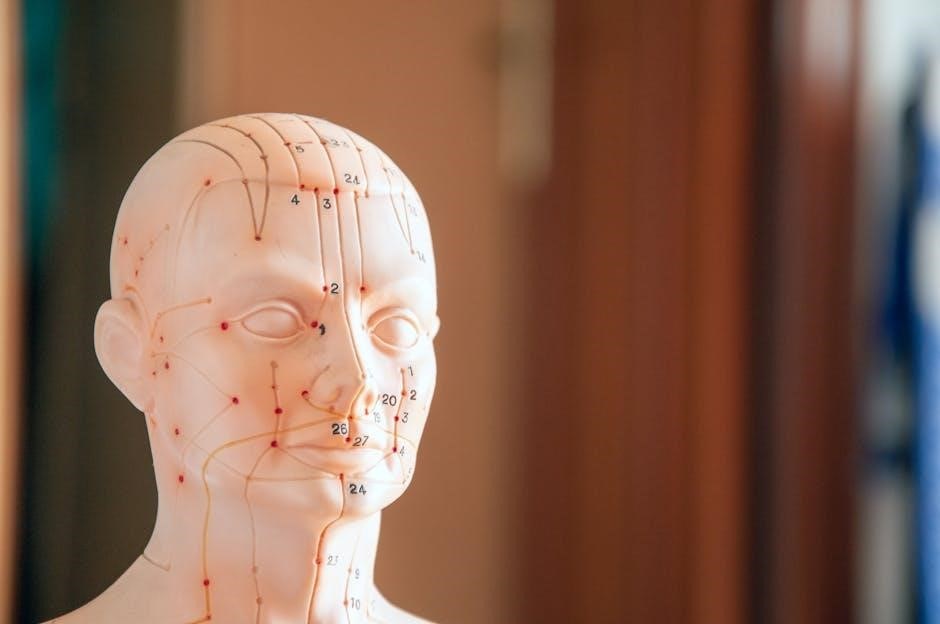The TH350 manual valve body is a high-performance component designed for precise control over transmission shifts, ideal for racing and heavy-duty applications, offering enhanced engine braking and durability.
Overview of the TH350 Transmission
The TH350 is a three-speed automatic transmission produced by General Motors, widely used in passenger cars and light trucks from 1969 to 1989. Known for its durability and reliability, it became a popular choice for both stock and modified applications. The transmission features a compact design and is capable of handling moderate power levels, making it suitable for a variety of vehicles. In racing and performance circles, the TH350 is favored for its strength and versatility, particularly when paired with aftermarket components like manual valve bodies. While it was originally designed for automatic shifting, enthusiasts often opt to replace the stock valve body with a manual one to gain precise control over gear changes, enhancing performance in drag racing, off-road, and other high-demand scenarios.

What is a Manual Valve Body?
A manual valve body is a specialized component designed to replace the stock valve body in an automatic transmission, such as the TH350. Unlike the original unit, which relies on hydraulic and vacuum controls to shift gears automatically, a manual valve body enables full driver control over gear changes. This is achieved by connecting the valve body to a manual shift mechanism, typically a lever or button, allowing the driver to select gears manually. By eliminating automatic shifting, a manual valve body provides instantaneous and precise control, which is particularly advantageous in racing, drag racing, and other high-performance applications where split-second shifts can make a significant difference. The manual valve body is often paired with engine braking features, further enhancing its appeal in competitive settings.
Benefits of a Manual Valve Body
A manual valve body offers precise control over gear shifts, eliminating delays caused by hydraulic or vacuum-actuated systems. This results in faster and more predictable transmission response, making it ideal for racing and high-performance applications. Engine braking options are often integrated, providing better control during deceleration. By removing reliance on automatic shifting, drivers can optimize power delivery and traction, especially in competitive environments. Additionally, manual valve bodies are typically more durable and less prone to failure under extreme conditions compared to stock units. They also eliminate the need for a vacuum modulator or kickdown cable, simplifying installation and reducing potential failure points. This makes them a preferred choice for enthusiasts seeking ultimate performance and reliability.

Key Features of the TH350 Manual Valve Body
The TH350 manual valve body offers precise shift control, forward or reverse shift patterns, engine braking options, and compatibility with racing applications, featuring durable components like detent balls and springs.
Forward and Reverse Shift Patterns
The TH350 manual valve body offers two primary shift patterns: forward (P-R-N-3-2-1) and reverse (P-N-3-2-1-R). The forward pattern is ideal for street driving, providing a smooth, automatic-like experience while maintaining manual control. The reverse pattern is popular in drag racing and performance applications, allowing quicker access to lower gears for faster launches. Both patterns ensure precise gear engagement and eliminate unwanted shifts, enhancing overall performance. The forward pattern is best for everyday use, while the reverse pattern excels in competitive environments where instantaneous control is critical. This versatility makes the TH350 manual valve body a favorite among racers and enthusiasts seeking tailored transmission behavior.
Engine Braking Options
The TH350 manual valve body provides exceptional engine braking control, enabling drivers to harness engine compression for deceleration. This feature is particularly beneficial in racing and heavy-duty applications, where precise speed management is crucial. The valve body allows for selective engagement of lower gears, such as 1st or 2nd, to maximize engine braking without unwanted shifts. This capability enhances control during downhill driving or when slowing down on a track. The manual design ensures that engine braking is deliberate and effective, giving drivers confidence in high-stakes scenarios. By retaining engine braking in specific gears, the TH350 manual valve body delivers a competitive edge and improved safety in performance driving situations. This feature is a cornerstone of its popularity among enthusiasts and professionals alike.
Compatibility with Racing Applications
The TH350 manual valve body is specifically engineered for high-performance racing environments, making it a preferred choice for drag racing, autocross, and off-road competitions. Its robust design withstands the rigors of intense racing conditions, delivering consistent and reliable shifts. The absence of a transbrake feature, while limiting certain uses, ensures simplicity and direct control, which is advantageous in applications where precision and speed are paramount. Racers benefit from its lightweight construction and ability to handle high torque outputs, making it an ideal component for vehicles requiring maximum acceleration and responsiveness. Whether in a bracket car or a monster truck, the TH350 manual valve body excels in delivering the performance needed to dominate the racecourse. Its compatibility with racing applications is unmatched, solidifying its reputation as a go-to upgrade for competitive drivers.

Installation Guide for the TH350 Manual Valve Body
Install the valve body, ensuring the manual valve link engages properly. Follow step-by-step instructions for a secure fit, verifying the shift pattern aligns with your transmission setup.
Tools and Materials Required
Installing a TH350 manual valve body requires specific tools and materials. Essential tools include a socket set, screwdrivers, torque wrench, and seal installer. Materials needed are gaskets, seals, transmission filter, oil pan gasket, and new transmission bolts. Additional items may include engine braking components and a shift linkage kit, depending on the application. Ensure all parts are compatible with your transmission model for a smooth installation process.
Step-by-Step Installation Instructions
Begin by removing the old valve body and cleaning the transmission case. Install the new manual valve body, ensuring the manual valve link engages with the shift linkage. Tighten the valve body bolts to the specified torque (typically 50 in-lbs). Connect the engine braking components if equipped. Shift through all gears to verify proper engagement. Finally, replace the transmission filter, reattach the oil pan, and refill the transmission fluid. Test the shifting pattern (P-R-N-3-2-1 or reverse) to ensure smooth operation. Proper installation ensures precise control over gear shifts, essential for high-performance applications.
Common Mistakes to Avoid
Avoid improper alignment of the manual valve link with the shift linkage, as this can cause gears to slip or fail to engage. Insufficient torque on valve body bolts may lead to leaks or poor performance. Neglecting to test the shift pattern after installation can result in unexpected behavior. Overlooking the installation of engine braking components may reduce braking efficiency. Not following the manufacturer’s torque specifications can damage the transmission case. Ensure all components are securely fastened and tested before operation to prevent costly repairs and ensure optimal performance.

Key Components of the TH350 Manual Valve Body
The TH350 manual valve body includes the valve body assembly, detent balls, springs, and shift linkage, ensuring precise control over gear shifts and engine braking functionality.
Valve Body Assembly
The valve body assembly is the core of the TH350 manual valve body, responsible for directing hydraulic fluid to engage gears smoothly. It includes a machined aluminum or steel body with drilled passages and ports for fluid flow control. The assembly integrates detent balls and springs to regulate shift patterns, ensuring precise gear engagement. Designed for durability, it withstands high-performance demands, making it ideal for racing and heavy-duty applications. The valve body assembly works in tandem with the shift linkage and manual shaft to provide manual control over transmission shifts, enhancing driver command and reducing shift overlap. Proper installation and alignment of the valve body assembly are critical for optimal performance and reliability.
Detent Balls and Springs
Detent balls and springs are crucial components within the TH350 manual valve body, ensuring precise gear engagement and disengagement. These components work together to regulate the shift pattern, providing a firm detent feel when changing gears. The balls and springs are carefully calibrated to maintain consistent hydraulic pressure, preventing unintended shifts. In high-performance applications, upgraded detent springs offer increased stiffness, enhancing control during aggressive shifting. Proper installation and adjustment of these parts are essential to avoid issues like slippage or hesitation. Regular inspection and replacement of worn-out detent balls and springs are recommended to maintain optimal transmission performance and reliability in both racing and heavy-duty scenarios.
Shift Linkage and Manual Shaft
The shift linkage and manual shaft are essential components in the TH350 manual valve body, enabling precise manual control over gear shifts. The manual shaft connects directly to the shift linkage, allowing the driver to engage gears without relying on automatic functions. Proper alignment and installation of these parts are critical to ensure smooth, accurate gear changes. The shift linkage transmits the driver’s input to the valve body, maintaining precise control over the transmission’s operation. Regular maintenance, including lubrication and inspection, is vital to prevent wear and tear. High-quality components and precise engineering ensure the shift linkage and manual shaft deliver reliable performance, making them indispensable for drivers seeking full manual control in high-performance applications.

Troubleshooting Common Issues
Common issues with the TH350 manual valve body include leaks, shift pattern problems, and manual shaft engagement difficulties. Identifying and addressing these issues promptly ensures optimal performance and longevity.
Identifying Leaks and Repairing Them
Leaks in the TH350 manual valve body often occur at the gasket surfaces or seal points. To identify leaks, inspect the valve body for visible fluid droplets or stains. Common sources include the valve body-to-transmission case gasket or pan gasket. To repair, clean the area thoroughly, replace the damaged gasket or seal, and ensure proper torque specifications during reassembly. Using high-quality gasket material and applying a thin layer of sealant can prevent future leaks. If the leak persists, inspect the valve body bolts for damage or cross-threading and replace them if necessary. Regular maintenance and prompt repairs are crucial to maintaining transmission performance and longevity.
Diagnosing Shift Pattern Problems
Diagnosing shift pattern issues in the TH350 manual valve body involves analyzing how gears engage. If the transmission fails to shift smoothly or skips gears, inspect the shift linkage and manual shaft for proper alignment. Worn detent balls or springs can cause erratic shifting, while incorrect shift pattern adjustments may lead to premature or delayed gear changes. Use a scan tool to monitor transmission performance and check for fault codes. Additionally, ensure the valve body is properly synchronized with the transmission case and that all components are clean and free from debris. If issues persist, consider consulting a professional or referring to the installation manual for detailed troubleshooting steps.
Fixing Manual Shaft Engagement Issues
Manual shaft engagement issues in the TH350 valve body often stem from misalignment or worn components. Ensure the shift linkage is securely connected and properly adjusted to avoid slippage. Inspect the manual shaft for damage or excessive wear, replacing it if necessary. Apply a small amount of transmission fluid to moving parts to reduce friction. If engagement remains inconsistent, check the detent balls and springs for proper function and replace them if worn. Finally, verify that the valve body is correctly installed and aligned with the transmission case, as any misalignment can disrupt manual shaft operation. Regular lubrication and thorough inspection during maintenance can help prevent these issues from recurring.

Maintenance and Repair Tips
Regularly clean the valve body, inspect for wear, and lubricate moving parts. Replace damaged components promptly and ensure proper alignment during repairs to maintain optimal performance.
Cleaning the Valve Body
Cleaning the TH350 manual valve body is essential for maintaining optimal performance. Start by disassembling the valve body and soaking it in a solvent to remove dirt and debris.
Use a soft-bristle brush to gently scrub away stubborn contaminants, ensuring all passages are clear.Inspect for worn or damaged components and replace them as needed.
After cleaning, dry the valve body thoroughly with compressed air to prevent moisture buildup.
Avoid using harsh chemicals that could damage the surface finish. Once clean and dry, reassemble the valve body with new gaskets and seals to ensure proper function.
Regular cleaning prevents clogs and ensures smooth, precise shifts, keeping your transmission running at peak efficiency.
Replacing Worn-Out Components
Replacing worn-out components in the TH350 manual valve body is crucial for maintaining transmission performance. Inspect parts like detent balls, springs, and seals for wear or damage.
Worn detent balls and springs can cause inconsistent shifts, while damaged seals may lead to leaks. Use genuine or high-quality replacement parts.
When replacing, ensure all components are properly aligned and seated to avoid further damage. Apply a thin layer of transmission fluid to new seals before installation.
Reassemble the valve body carefully, torque bolts to specifications, and test the transmission to ensure smooth operation. Regularly replacing worn components prevents major repairs and extends the life of your manual valve body.
Adjusting the Shift Linkage
Adjusting the shift linkage on a TH350 manual valve body ensures precise gear engagement and smooth operation. Begin by accessing the shift linkage, typically located near the valve body or transmission pan.
Loosen the locknut on the shift linkage bolt, then turn the bolt clockwise or counterclockwise to achieve the desired shift feel.
Tighten the locknut firmly after adjustment to maintain the setting. Over-tightening can restrict movement, so ensure the linkage operates freely.
Test the transmission by shifting through all gears to confirm proper engagement and disengagement.
If issues persist, refer to the manufacturer’s instructions or consult a transmission specialist for further assistance.

Performance Enhancements
Enhancing the TH350 manual valve body involves upgrading to high-performance components, improving shift response, and optimizing engine braking for superior control and efficiency in racing applications.
Upgrading to a High-Performance Valve Body
Upgrading to a high-performance valve body enhances the TH350 transmission’s capabilities, offering precise control and faster shifts. Brands like TCI and Hughes provide top-tier options, known for durability and reliability. These valve bodies are popular in racing, such as drag racing, where instantaneous shifts are crucial. They often feature forward or reverse shift patterns, catering to specific needs. By upgrading, enthusiasts gain improved shift precision, reduced lag, and better engine braking control. This makes them ideal for competitive environments, ensuring optimal performance and responsiveness. The upgrade is a key step for those seeking to maximize their transmission’s potential in high-demand applications.
Improving Shift Response
Improving shift response in the TH350 manual valve body involves optimizing its internal components and adjustments. Upgrading the valve body’s springs and detent balls ensures crisp, instantaneous shifts, reducing any lag or overlap. Additionally, fine-tuning the shift linkage and manual shaft alignment is critical for smooth, accurate gear changes. High-performance valve bodies are engineered with stiffened springs and precision-machined components to deliver consistent and rapid shifts under various driving conditions. Regular maintenance, such as cleaning and lubricating the valve body, also plays a role in maintaining optimal shift response. These enhancements make the transmission highly responsive, ideal for racing and high-performance applications where quick, precise shifts are essential for achieving peak performance and efficiency.
Optimizing Engine Braking
Optimizing engine braking in the TH350 manual valve body involves fine-tuning its internal components to maximize deceleration control. By adjusting the valve body’s orifice sizes and spring pressures, engine braking can be tailored to specific driving conditions. Manual valve bodies often feature engine braking options in both forward and reverse gears, enhancing control during downhill driving or racing scenarios. Upgrading to high-performance components, such as stiffer detent springs and precision-machined valve body parts, ensures consistent and predictable braking performance. Proper adjustment of the shift linkage and manual shaft alignment also contributes to smooth engine braking engagement. This optimization is particularly beneficial in applications like drag racing and off-road use, where precise control over deceleration is crucial for performance and safety.

Real-World Applications
The TH350 manual valve body excels in drag racing, monster trucks, and off-road vehicles, offering precise control and durability in high-stress environments where manual shifting is essential.
Manual Valve Body in Drag Racing
The TH350 manual valve body is highly popular in drag racing due to its ability to provide precise, instantaneous gear shifts, eliminating delay and overlap. Racers appreciate the forward shift pattern (P-R-N-3-2-1) and the option for engine braking in specific gears, which enhances control during launches and between shifts; Its durability and reliability make it a favorite for high-stress, high-performance applications. The manual operation allows drivers to maintain full control, crucial for competitive drag racing where every fraction of a second counts. Compatible with TCI and Hughes performance components, it is often paired with lock-up torque converters for maximum efficiency. This setup is ideal for bracket cars and other racing vehicles where quick, consistent ETs are essential.
Use in Off-Road and Monster Trucks
The TH350 manual valve body is widely utilized in off-road and monster truck applications, where driver control and durability are paramount. Its full manual operation allows precise gear shifts, essential for navigating challenging terrain and maintaining traction. The reverse shift pattern option enhances maneuverability in tight spaces, while engine braking capabilities help control vehicle speed during steep descents. Monster trucks benefit from the valve body’s strength and reliability under extreme loads. Compatibility with high-performance components ensures optimal functionality in harsh environments, making the TH350 manual valve body a preferred choice for off-road enthusiasts and competitive monster truck racing. Its robust design withstands the rigors of heavy-duty use, delivering consistent performance in demanding conditions.
Applications in Autocross and Road Courses
The TH350 manual valve body is favored in autocross and road course racing for its precise control over gear shifts, enabling drivers to optimize acceleration and cornering. Its full manual operation allows for quick, deliberate shifts, which are critical in competitive racing environments. Engine braking features further enhance control during deceleration, aiding in tighter turns and maintaining stability. While it excels in these settings, some users note that the lack of automatic shifting can be less convenient for autocross events requiring rapid transitions. Despite this, the valve body’s durability and performance make it a popular choice for drivers seeking maximum control and responsiveness in high-performance racing applications.

Expert Recommendations
Experts suggest selecting the TH350 manual valve body based on specific racing needs, with TCI and Hughes being top choices for reliability and performance in competitive applications.
Choosing the Right Valve Body for Your Needs
When selecting a TH350 manual valve body, consider your specific application and performance goals. For drag racing, a reverse shift pattern with engine braking is ideal, while forward patterns suit street use. TCI and Hughes are top brands, with TCI offering excellent performance but requiring careful installation due to complex instructions. Hughes provides a reliable alternative with fewer reviews but proven durability. Assess whether you need a transbrake or manual control, as this impacts valve body functionality. Ensure compatibility with your transmission type and desired shift patterns (P-R-N-3-2-1 or reverse). Aligning your choice with your vehicle’s use ensures optimal performance and reliability in both racing and everyday driving scenarios.
Brand Comparisons (TCI, Hughes, etc.)
TCI and Hughes are leading brands for TH350 manual valve bodies, each offering unique features. TCI is renowned for its high-performance designs, delivering precise shifts and durability, making it a top choice for racing applications. However, TCI’s instructions are often criticized for being complex, which can challenge DIY installers. Hughes, on the other hand, provides a more straightforward installation process with comparable performance. Both brands offer excellent quality, but TCI is preferred for advanced racers, while Hughes is ideal for those seeking ease of use. When choosing, consider your technical expertise, performance needs, and budget to select the best fit for your transmission setup.
Professional Installation Tips
Professional installation of the TH350 manual valve body requires precision and attention to detail. Ensure the transmission case is clean and free of debris before installing the valve body. Use a torque wrench to secure the valve body bolts to the specified torque rating, typically around 50 in-lbs. Align the shift linkage properly with the manual shaft to avoid misalignment issues. Lubricate all moving parts with transmission fluid to prevent wear. After installation, perform a test drive to verify smooth shifting and proper engine braking functionality. Always refer to the manufacturer’s instructions for specific torque values and assembly steps to ensure a trouble-free installation and optimal performance.
